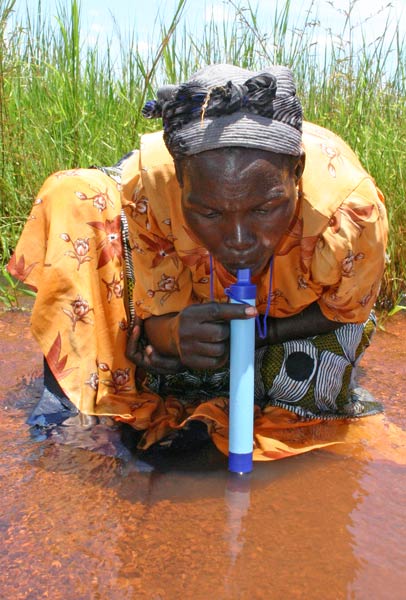During Dr. Becker’s lecture about his experiences in Africa working in a refugee camp and our discussion about the necessities of disaster relief housing, I found myself thinking what kind of direction I as a western cultured, American design student could follow to help those in need in Africa and other places with different cultures. Justin DeSilva asked whether or not it is possible for us to design beyond cultural and social barriers to create solutions which truly embrace their audience. I believe that it is possible, but that it takes a lot of dedication, diverse knowledge, and research into the situation which those whom you are designing are involved. Also, I think that the scope of the issue is a very important factor. Designing a hand-held product is very different from designing a systemic medical assistance infrastructure, for instance.
There are several examples of how western designers have created design solutions which, in many ways, transcend cultural boundaries as well as provide a very positive solution to the problem. One of the most well known is Vestergaard-Frandsen’s LifeStraw®.


The LifeStraw® is a personal water purification and filtration product which allows users to drink from otherwise disease-ridden water sources. The straw uses three different filtration systems, halogenated resin, anion exchange resin, and granular activated, silver-impregnated, carbon, to filter out diarrhea-causing bacteria, microbes, and viruses. The straw is easy to use and provides economical accessibility to sustainable drinking water sources in places which usually have none. This product has been embraced by many different cultures because of its effectiveness and simple design.
I think that situations of displaced persons from political and/or natural crises are of great importance in the field of humanitarian design. That is why I am currently working on designing refugee camp housing for Darfur, Sudan, and trying to incorporate energy harnessing smart materials, to generate the energy needed for everyday usage and emergency medical care. There are many issues which I need to research and consider, but I am confident that the project will help inform my design perspective and potentially lead to greater impact in the future, through implemenetation.
I think that situations of displaced persons from political and/or natural crises are of great importance in the field of humanitarian design. That is why I am currently working on designing refugee camp housing for Darfur, Sudan, and trying to incorporate energy harnessing smart materials, to generate the energy needed for everyday usage and emergency medical care. There are many issues which I need to research and consider, but I am confident that the project will help inform my design perspective and potentially lead to greater impact in the future, through implemenetation.

No comments:
Post a Comment